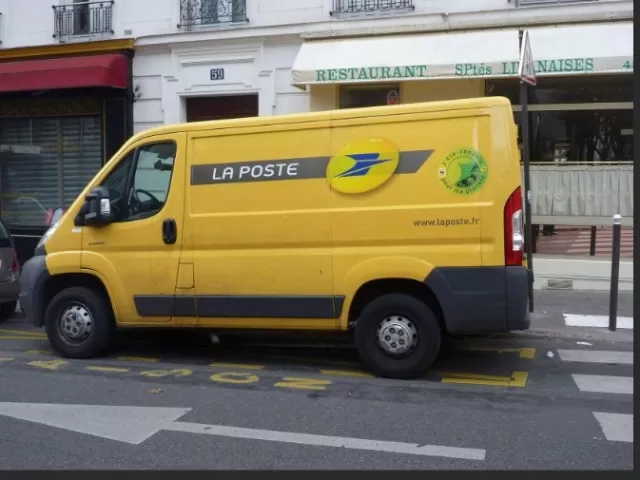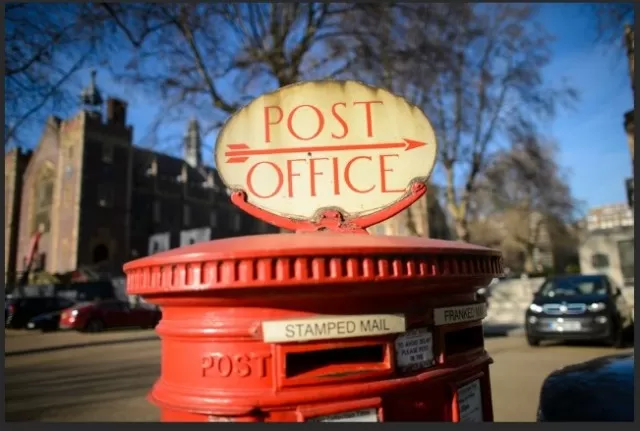Insider Insights: post office Tips for You. Behind the familiar routine of checking your mailbox lies a world of intricate operations and vital connections that drive the Postal Service. It’s a network woven with threads of logistics, dedication, and community, extending far beyond the simple act of delivering letters and packages.
Every step of this journey is orchestrated with meticulous precision. From the bustling sorting facilities that process a staggering volume of mail to the quiet determination of postal workers navigating varied terrains, each component plays a pivotal role in ensuring that connections are maintained and stories are shared.
The Postal Service transcends mere functionality; it’s a conduit of human connection. It unites loved ones separated by miles, delivers cherished memories in the form of photographs and handwritten letters, and supports commerce by ensuring packages reach eager recipients. Beyond its tangible impact, it carries intangible emotions—hope, love, and a sense of belonging.
The Longstanding Foundation of American Public Services

While your local post office might often be associated with mundane items like junk mail, bills, and heartwarming birthday cards from your mom, its role goes far beyond that perception.
The United States Postal Service (USPS) is a behemoth in the world of mail handling, responsible for a staggering 472. 1 million mail pieces processed and delivered daily.
This massive volume accounts for a remarkable 48 percent of the total global mail circulation. Yet, this level of operational excellence is not surprising given the USPS’s extensive experience in the field.
Established in 1775 as the United States Post Office, with none other than Benjamin Franklin at its helm as the inaugural postmaster general, this institution boasts the distinction of being the oldest public service in the nation’s history.
The USPS’s rich legacy and remarkable contributions to the nation’s communication infrastructure are accompanied by a host of intriguing facts that shed light on its enduring significance.
From its origins rooted in the early days of American independence to its current role as an essential cog in the country’s logistical machinery, the USPS has stood the test of time and evolved into a symbol of reliability and connectivity.
As we delve into the annals of this venerable institution, we unearth not just statistics, but stories that encapsulate its profound impact on American society.
From facilitating commerce to binding families separated by miles, the USPS has played a crucial role in knitting the fabric of the nation together. Beyond the tangible mail deliveries, it symbolizes a sense of unity, even in an increasingly digital world.
So, the next time you drop a letter into that iconic blue mailbox or receive a package at your doorstep, take a moment to appreciate the history and legacy that comes with it.
The USPS stands as a testament to the enduring power of public service and its ability to adapt, grow, and maintain its relevance through centuries of change. “.
Operating on Self-Sufficiency
Contrary to widespread beliefs, the United States Postal Service (USPS) operates under a unique financial framework—it relies solely on revenue generated from the sale of postage stamps, mailing products, and various services.
This distinctive approach sets it apart from the common assumption that tax dollars fund its operations. The USPS stands as a self-sustaining entity, maintaining its financial independence through the services it provides to the public.
While the USPS falls within the jurisdiction of the executive branch of the U.
S. government, it operates as an autonomous agency, drawing parallels with notable organizations like NASA and the CIA.
This designation empowers the USPS to function with a degree of separation from direct government appropriations and grants it the flexibility to manage its affairs in pursuit of efficiency and effectiveness.
However, the landscape hasn’t always been characterized by such self-governance.
In the years leading up to 1971, the USPS followed a different structure. During this period, Congress held the authority to establish postal rates, and the postmaster general was appointed with their endorsement.
Additionally, the postmaster general held a position within the president’s cabinet, signifying a more direct link to the executive branch’s administrative hierarchy.
The transformation from this closely integrated model to the independent agency we recognize today underscores the evolution of the USPS.
This shift in structure not only reflects the changing dynamics of governmental operations but also emphasizes the significance of the USPS as a critical public service. By adapting its governance and operational strategies, the USPS has demonstrated a commitment to effectively meeting the communication and logistical needs of the nation while maintaining its financial autonomy.
In a world where the interplay between public services and government funding is often complex and multifaceted, the USPS stands as a unique and intriguing example of how an institution can leverage innovation and financial self-sufficiency to provide essential services that reach every corner of the nation.
Canine Conundrums for Mail Carriers

While it might sound like a well-worn stereotype, the animosity between mail carriers and certain dogs is indeed a tangible challenge.
The issue is more than just a playful cliché; it’s a significant concern that impacts the safety and well-being of mail carriers across the United States. Astonishingly, nearly 6,000 mail carriers face the harrowing experience of being bitten or attacked by dogs each year, highlighting the gravity of the situation.
This concern has prompted the United States Postal Service (USPS) to take proactive measures, including the sponsorship of an annual event called National Dog Bite Awareness Week, observed in the month of June. .
Recognizing the importance of addressing this issue, the USPS has put forth guidelines for both homeowners and mail carriers to ensure a safer interaction between dogs and mail delivery personnel.
The USPS advises homeowners to take precautions such as securing their pets before opening the door to accept a package. This simple step can significantly reduce the risk of unexpected confrontations and contribute to the safety of mail carriers.
Moreover, the USPS advises caution when receiving mail directly from the mail carrier in the presence of a dog.
While it might seem innocuous to us, some dogs perceive this action as a threatening gesture, potentially triggering aggressive behavior. By being mindful of these subtleties, homeowners can contribute to a more secure and harmonious interaction between their pets and the mail delivery process.
In instances where the safety of mail carriers is compromised due to an unsecured dog, the USPS maintains the authority to prioritize the well-being of its employees.
This means that mail carriers who feel threatened by an unrestrained dog may opt to withhold direct mail delivery to the concerned household. While this might seem like an inconvenience, it underscores the USPS’s commitment to the safety of its personnel and encourages homeowners to play an active role in fostering a secure environment for everyone involved.
In essence, the dynamic between dogs and mail carriers is a reminder of the intricate challenges that public service personnel encounter daily.
By promoting awareness, offering guidance, and fostering responsible pet ownership, the USPS strives to mitigate potential conflicts and ensure the smooth functioning of an essential service that impacts countless lives across the nation.
Anticipate Your Mail with Informed Delivery
For those who find themselves eagerly anticipating the arrival of a crucial letter or package, or those who simply relish the idea of a sneak peek into their upcoming mail, the United States Postal Service (USPS) offers an innovative solution: Informed Delivery.
This service, available for free through the USPS website, opens up a world of convenience and anticipation by allowing you to gain insights into your mail before it even lands in your mailbox.
In a world where instant gratification is increasingly sought after, Informed Delivery emerges as a valuable tool.
Enrolling in this service grants you access to a range of benefits, from previewing images of letter-size mail that’s set for delivery on a given day to remotely tracking packages through your smartphone, computer, or tablet.
Picture this: you wake up in the morning, curious about what might be waiting for you in your mailbox.
Instead of the usual uncertainty, you can now log in to your Informed Delivery account and get a glimpse of the incoming mail items. This not only appeases your curiosity but also helps you prepare for the contents of your mailbox.
Whether it’s an important document, a special announcement, or a long-awaited package, you’re armed with the knowledge of what’s on its way.
The convenience doesn’t end there.
Informed Delivery also extends its reach to package tracking. Whether you’re on the go or stationed at your desk, you can keep tabs on your packages using the digital devices you have at hand.
This level of control ensures that you’re well-informed and prepared, minimizing the surprises that can arise from uncertain delivery schedules.
In essence, the USPS’s Informed Delivery service is a testament to the organization’s dedication to meeting the evolving needs of its customers.
By seamlessly integrating technology with the traditional mail experience, the USPS not only enhances convenience but also adds an element of excitement to the anticipation of receiving mail. Whether you’re an eager recipient or simply someone who appreciates staying in the loop, Informed Delivery offers a window into the future of mail delivery and transforms the way we engage with our mailboxes.
The Post Office\’s Role in Combating Hunger

Amidst its daily duties of delivering mail and packages, the United States Postal Service (USPS) plays a vital role in addressing a pressing societal issue: hunger.
Every year, on the second Saturday in May (with the exception of the rescheduled 2020 drive), the National Association of Letter Carriers, the union to which post office mail carriers belong, orchestrates a remarkable effort known as the “Stamp Out Hunger Food Drive. ” This event stands as the largest single-day food drive in the nation, uniting over 10,000 cities across the country for a common cause.
The goal of the Stamp Out Hunger Food Drive is simple yet immensely impactful: to alleviate hunger and aid those in need.
This initiative serves as a testament to the USPS’s commitment to its communities, as well as the dedication of letter carriers who go beyond their traditional roles to make a difference in the lives of individuals and families facing food insecurity.
Participation is uncomplicated and accessible to everyone.
On the designated day, individuals are encouraged to contribute by leaving a bag filled with nonperishable food items such as canned goods, peanut butter, rice, pasta, and boxed foods, next to their mailboxes. From there, the local letter carriers, who are familiar faces in neighborhoods across the country, take on the responsibility of collecting these donations.
This seamless process not only encourages widespread community involvement but also maximizes the convenience for donors, making it easy to contribute to a worthy cause.
The impact of the Stamp Out Hunger Food Drive is substantial, channeling the collective efforts of communities into tangible results.
Donations collected during this event directly benefit local food banks, shelters, and pantries, bolstering their resources and enabling them to extend a helping hand to those in need.
In essence, the USPS’s involvement in this initiative transcends its traditional role as a mail carrier and underscores its significance as a conduit for positive change within society.
Through the Stamp Out Hunger Food Drive, the USPS exemplifies how a public service can harness its reach and influence to make a tangible difference in the lives of countless individuals, ultimately fostering a stronger, more compassionate community.
*The information is for reference only.